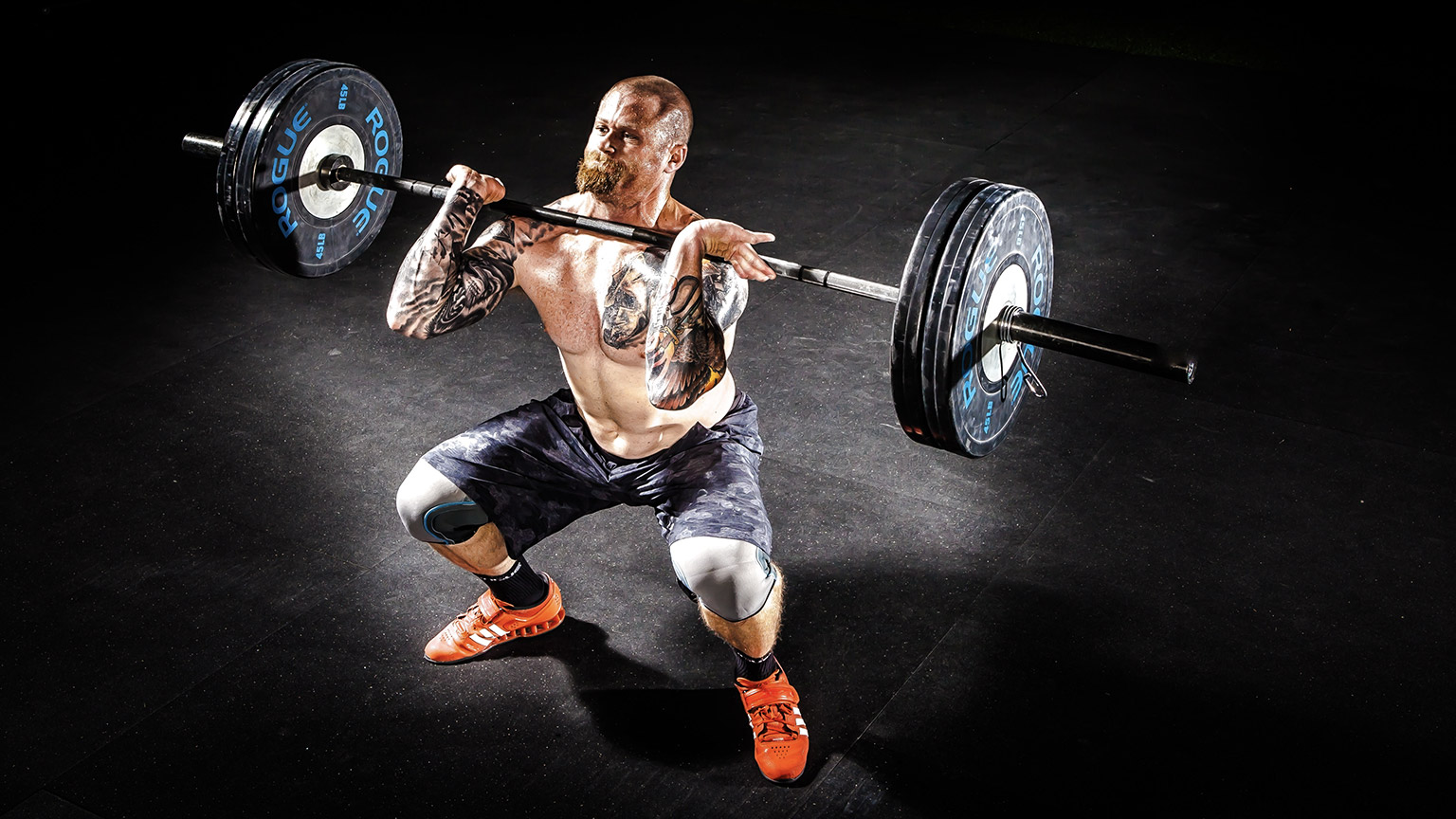Hypertrophy training, also known as muscle-building training, is a critical aspect of fitness instruction, especially when working with elite athletes. It focuses on increasing muscle size and is a fundamental component of strength and conditioning programs. In this context, hypertrophy training is vital because it enhances an athlete's ability to generate power, endure physical stress, and perform at peak levels. Let’s find out more on hypertrophy and the variety of training approaches, and their significance for fitness instructors working with elite athletes.
Humans have long held a fascination for those who have achieved significant muscle hypertrophy. Writings from as far back as the 6th century B.C give legend to a famous ancient Greek athlete Milo of Croton. Milo was an Olympic wrestler of legendary status and was marvelled at for his muscular physique which he is said to have developed in his off-season by carrying a newborn calf on his back every day until the Olympics took place. By the time the Olympics rolled around the calf had grown to full size. Legend has it, that he would walk into and around the stadium carrying the cow and then slaughter it for roasting and eating. This is a classic example of the progressive overload principle in action.

In the late 1800s, strongmen like Eugene Sandow included posing sessions at the end of their weightlifting sessions to show off the muscular development they had achieved through training.
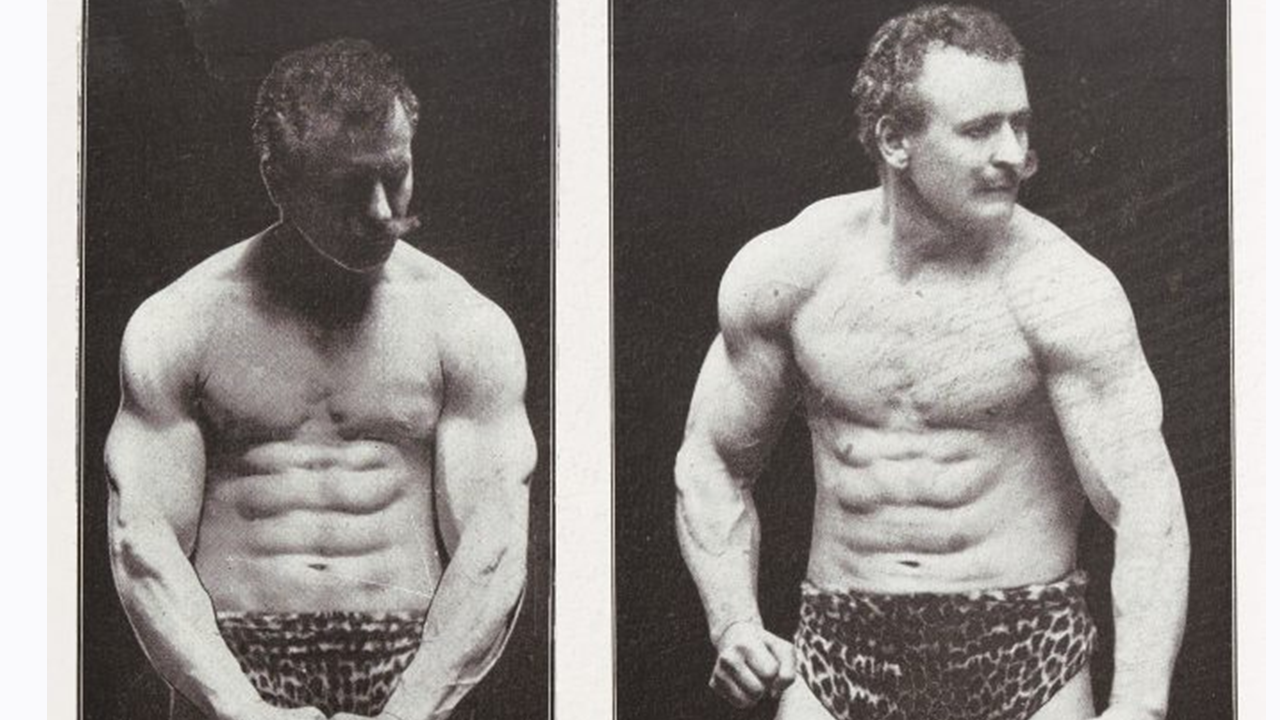
This shows that people figured out long ago that lifting progressively heavier weights over time resulted in an increase in muscle size and strength. However, it was not until much more recently that researchers began studying resistance training and applied the scientific method to identify exactly what causes muscle growth, by exploring the mechanisms and processes through which lifting weights causes hypertrophy. This research has allowed us to better understand the mechanisms behind the hypertrophy of muscle, which we as trainers can now use to achieve hypertrophy goals with our clients.
What is hypertrophy?
Schoenfeld (2021) defines muscle hypertrophy as an increase in the size of muscle tissue due to the enlargement of both the contractile elements of muscle, the expansion of the extracellular matrix of muscle to support growth, and, an increase in fluid within the muscle. This means that enlargement occurs in both the parts of the muscle that cause contraction and the layers of supportive tissue that surround them. We will dive deeper into the science behind hypertrophy later in the topic.
Hypertrophy training is a resistance training approach that describes working out in a way that maximises muscle growth. This form of training is generally the domain of bodybuilders and anyone else looking to add muscle to their frame for aesthetic purposes. Certain athletes can also benefit from accumulating more musculature to be able to produce more impact in contact situations and also to protect themselves from external forces (e.g. during contact sports).
Bodybuilding training approaches are not the only way to achieve muscle hypertrophy. In fact, many athletes achieve significant hypertrophy as a side-effect of training for sports performance. This shows that other training modalities like muscular endurance, strength, and power training can all result in muscle growth. An example of this unintentional hypertrophy can be seen in gymnastics athletes. Those gymnasts involved in disciplines involving a strength element like the parallel bars, the rings, or the pommel horse, only ever work with their own body weight but still achieve significant hypertrophy without applying hypertrophy weight-lifting protocols.

Overriding principles of hypertrophy training from a resistance training perspective include the following:
| High training volume | This is usually achieved by multi-set approaches (targeting the same muscle group). |
|---|---|
| High frequency of training | Generally achieved by splitting workouts to target different muscle groups (allowing more volume of training per week). |
| A combination of exercises | A mix of multi-joint compound and single-joint isolation exercises are used to completely tax muscles. |
| Manipulation of load and repetition range and rest | This is done to maximise all avenues of muscular development (more on this in the science behind hypertrophy information to come). |
| Training to failure/near failure | This ensures high levels of fatigue are achieved with associated muscle damage and hormonal responses (more on this to come). |
The key concepts in hypertrophy
While there are sciences behind hypertrophy, there are three main constructs that are necessary to maximise muscle growth. They are that exercises performed must cause:
- High mechanical tension (stress on muscle)
- Local metabolic stress
- Muscle damage
The following table describes what each of these constructs involves.
| High mechanical tension (stress on muscle) | This refers to the loading of muscle and is proposed to disrupt skeletal muscle structures, compromising the integrity of individual muscle fibres and leading to cellular responses. |
|---|---|
| Local metabolic stress | This involves the accumulation of metabolic by-products that are thought to stimulate anabolism (create larger structures), of the local muscle fibres. |
| Muscle damage | This refers to the inflammatory response and upregulation of muscle protein synthesis to exercise-induced muscle damage, resulting in greater muscle size. Essentially, growth via a damage and repair process |
The benefits of hypertrophy training
Many individuals frequently apply hypertrophy training principles primarily for aesthetic reasons. Nevertheless, this form of training offers a diverse array of benefits beyond aesthetics. See the following table to learn the benefits of each.
Strength potential
The Size Principle states that a bigger muscle has the potential to create more force. While there are other key factors associated with pure strength like the efficiency of your nervous system (i.e. the ability to fire all of your motor units in synchrony), it stands to reason that the bigger the muscle, the more force it can create if trained appropriately (Ianev, n.d.).
Enhanced storage of elastic energy
Hypertrophy training (especially eccentric exercise) can make the tendons and the muscle fibres that attach to it thicker. This will allow you to store more elastic energy when absorbing force (e.g. when your foot strikes the floor when sprinting). This can then be turned into potential energy which will, in turn, make the following concentric action more powerful. This is beneficial to athletes who need to be able to jump or change direction quickly (Ianev, n.d.).
Injury prevention and prevention of muscle loss
Thickened tendons are less likely to get injured than smaller or thinner ones. Also, as you age, the loss of muscle (atrophy) is one of the main causes of many serious injuries due to falls. Muscle loss as you get older is well established. In non-training individuals, roughly 0.5 – 1% of the muscle mass is lost every year from the age of 50. A 70-year-old adult can thus have lost up to 20% of their muscle mass (Wilkinson et al, 2017). Hypertrophy training is an effective way of preventing or even reversing this process. Preserving muscle mass, or increasing it, will reduce the risk of this happening.
Increased insulin sensitivity
Hypertrophy training increases insulin sensitivity through several pathways. One of the ways to is simply by creating more room to store nutrients in the muscle. The more room there is in the muscles, the easier it is to store nutrients (as the muscles have a higher demand for them) and the less insulin you need to produce to facilitate this process. Hypertrophy training also relies heavily on carbs for fuel. You will use up a lot of muscle glycogen when training for hypertrophy. By using muscle glycogen, you are making more room in the muscles which means that it will be easier to store the carbs you eat, and thus you will not need to produce as much insulin to get the job done. Additionally, hypertrophy training increases the concentration and activity of key enzymes involved in increasing glucose transport and storage in the muscles (Ianev, n.d.).
Energy expenditure
Hypertrophy training also increases energy expenditure through several pathways. Firstly, a typical hypertrophy workout can burn anywhere from 300-600 calories or more depending on your strength, body weight, work capacity and area you are targeting (e.g. movements like deadlifts and squats require a lot more energy than concentration curls or dumbbell kickbacks). Secondly, after the workout is over, your energy expenditure will stay elevated above baseline for up to 40 hours, which is often referred to as afterburn or EPOC (excess post-exercise oxygen consumption). Lastly, repairing damaged muscle tissue (and synthesising new muscle tissue) is an energetically costly process. Studies have estimated the energy cost of depositing 1kg of skeletal muscle tissue to range from 1450 Kcal to 1780 Kcal (Ianev, n.d.).
Quality of life
There is a strong correlation between muscle mass and quality of life in older populations. In fact, a recent study by Haraldstad et al (2017) showed that elderly individuals significantly increased their health-related quality of life after 12-weeks of resistance training.
Reduced risk of osteoporosis
The benefits of resistance training on the prevention (and even reversal) of osteoporosis are well established. Resistance exercise exerts a mechanical load on bones leading to an increase in bone strength. Based on the available information, resistance exercise may be the most optimal strategy to improve muscle and bone mass in all populations affected by bone loss (Hong and Kim, 2018).

The following exercise recommendations come from the American College of Sports Medicine (n.d.) and Schoenfeld et al (2016 & 2021).
The first thing to note about research relating to hypertrophy training principles is that there is still a lot of debate in this area as a range of different approaches appear to have similar hypertrophic results. This means both the type and intensity of load can vary significantly while still achieving hypertrophy.
ACSM suggests the following general guidelines for targeting hypertrophy:
- Higher volume sessions consisting of multiple sets for the same muscle groups.
- A mix of heavier and lighter loads corresponding to a 1-12 repetition range with an emphasis on the 6-12 repetition zone. The intent of each set should be to work to failure/near failure).
- Rest periods of between 60 seconds and 2 minutes depending on load and repetition zone used
Like any exercise programme, hypertrophy programmes can be localised (i.e. target specific muscle groups) or generalised (have a total body approach). For general conditioning the ACSM suggest choosing multi-joint starting with multi-joint compound movements and then moving to more isolating exercises
Here are the programme training guidelines you should use for hypertrophy training in a little more detail:
Frequency
There is clear evidence that training muscle groups twice a week elicits superior hypertrophic outcomes than training them once a week. It is therefore inferred that major muscle groups should be trained at least twice a week to maximise muscle growth. Whether training a muscle group three times a week elicits further gains remains to be determined (Schoenfeld, 2016).
Volume/Intensity
Higher volume (20+ sets of exercise per muscle group per week) is associated with greater increases in hypertrophy than lower volumes of exercise (6-10 sets per muscle group per week) in both trained and untrained populations. Training with a moderate number of repetitions (6-12), multiple sets (3-6). Moderate loads (60-80% 1RM) and shorter rest periods between sets (60-90secs) elicits greater metabolic stress in muscle than higher loads (e.g. strength training) and appears to be a potent stimulus for inducing muscle hypertrophy (Schoenfeld, 2016).
However, Krzysztofik et al (2019) suggests that as long as training is performed to volitional fatigue (near failure), the training load might not affect exercise-induced muscle hypertrophy. Studies have shown that both lower load (less than 60%1RM) and moderate load (over 60%1RM) elicited very similar hypertrophy results provided all sets were completed to volitional fatigue. However, in these studies, the groups training with lower load had to complete three times the training volume (reps and sets) to achieve the same levels of growth. This provides rationale for the moderate load/moderate repetition training approach as it is a more time-efficient means of training and means you can target more muscle groups within the same workout.
There is also a school of thought that lifting above 70% of 1RM targets higher threshold motor units fast twitch fibres) which have the capacity to grow larger than slow twitch fibres. It does, however, show that both higher load and lower load approaches can be used to achieve muscle growth effectively. It should also be noted that if you are not completing sets to volitional fatigue, then a minimum load of over 60%1RM is necessary to achieve significant muscle hypertrophy (Krzysztofik et al, 2019).
So, the more volume the better?
Not necessarily. There is not thought to be a linear relationship between volume and growth. A study by Hackett et al (2017) found no significant difference in muscle hypertrophy between subjects who performed either 5 sets of 10 repetitions or 10 sets of 10 repetitions over a 12-week period. Instead, it is thought that the relationship between volume and growth is more of an inverted U, suggesting there is a sweet spot for growth.
Excessive volume could lead to extended overreaching or, perhaps overtraining syndrome. The net effect of this would be a reduction in the capacity for anabolic processes because of a heightened catabolic status and increased protein breakdown.
Rest
Rest between sets will be dependent on the approach being used, but most studies report ideal rest periods of between 60 and 120 seconds. This appears to be optimal considering the energy systems you typically use in a hypertrophy set (ATP-PC and Glycolytic and the time these systems need to recover). Rest periods may also be exercise dependent, for example, a client would require more rest in between sets of Barbell Squats than they would in between an isolation exercise for a small muscle group such as a Dumbell Lateral Raise.
Training velocity
Most research indicates that a variety of tempos should be used to elicit muscle hypertrophy, particularly when it comes to the eccentric phase of exercises. Faster movement tempos (less than 2 seconds per phase result in more maximal repetitions completed (thus more mechanical strain) when compared to slower tempos, however slower eccentric tempos (up to 6 seconds duration) extend the muscle time under tension, which can also contribute to greater hypertrophy. This indicates that using different tempos across the training week might be the best way to elicit maximal gains. Of course, faster tempos lend themselves to more efficient sessions (and the potential for fitting in more volume) which is why the 2:1:2:1 tempo is often suggested.
Variety
A last key piece of information coming from this research is that variety of exercise approach may also be an important part of the hypertrophy process with multiple studies referencing “training monotony” which is where the muscle becomes accustomed to certain training approaches leading to less optimal results. Given that multiple loading, volume and tempo options resulted in similar hypertrophy outcomes, this would suggest periodising blocks of training with slightly different hypertrophy approaches may be warranted.
Starting a hypertrophy journey
Based on the information above, if someone was starting out on a hypertrophy journey it would be recommended to start with the following programme guidelines
| Training variables | Hypertrophy Starter | Variations |
|---|---|---|
| Number of exercises | 6-10 exercises per muscle group weekly A mix of compound and isolation exercises. |
Over time, it would be beneficial to change up the training approach, mixing in some higher rep/lower load exercises and extended eccentric phases on some exercises. |
| Load | 60-80% of 1RM (Ideally above 70%) |
|
| Repetitions | 6-12 | |
| Sets | 3-6 | |
| Rest intervals | 60 –120 secs | |
| Velocity/Tempo | 2-1-2-1 | |
| Frequency | Train key muscle groups at least twice weekly. Best split into target muscle splits e.g Chest, Back, Legs etc |
Watch the following short video, called Hypertrophy Training, which recaps the key programme guidelines for hypertrophy training.
Applying progressive overload in hypertrophy
The training variables associated with hypertrophy training will ultimately be chosen for a programme based on the individual needs of a client. In general, new clients will start with lower loads and longer rest intervals. They are best to start with compound exercises targeting the major muscle groups and focus on great form without working to absolute failure. As they improve their condition, the load will increase, and rest intervals will be systematically manipulated to apply progressive overload. The volume of exercise performed on each muscle group will also increase (exercises and sets), which will likely result in training splits for different muscle groups and a greater variation of exercises will be used (i.e. a combination of eccentric loading, tempo changes, compound and isolation exercises and differing repetition/load approaches).
Try it out
Brian has been attending the gym for 6-weeks now. He has been mainly focusing on learning resistance training techniques and muscular endurance over this time. Brian has employed you as a personal trainer and has shared a goal of gaining muscle to look better for summer. He has two days available to perform resistance training a week. Use the information in this scenario to answer the questions that follow:
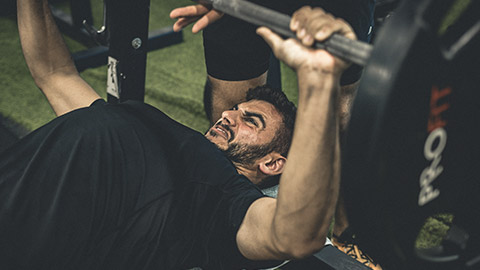
There are many and varied ways to train for hypertrophy, in fact, variety in hypertrophy training is essential for optimal results as it prevents the potential for training monotony. This makes hypertrophy training one of the most enjoyable resistance training modes as there are so many approaches you can use.
Let’s look at some common hypertrophy training approaches that can be used to produce a varied and enjoyable series of workouts for your clients. This is by no means an exhaustive list of hypertrophy approaches, but it covers some of the most used in industry. Rather than actual workouts, these are different ways of approaching sets of lifting with the intent of maximising one of the key mechanisms involved in hypertrophy of muscle (i.e. mechanical tension, metabolic stress/fatigue and muscle damage). It should also be noted that many of these training approaches should only be used by clients who have completed significant base hypertrophy training and are ready for more advanced lifting protocols.
Super-sets
These are also known as “paired sets” and are when a client performs two exercises in succession without rest. These can be used in a number of ways including:
Choosing exercises that share an agonist/antagonist relationship
This approach is commonly used because it allows for a greater volume of exercise to be completed in a given time (as exercises target opposing muscle groups you can rest one while the other works). It is hypothesised that an increase in total work completed will increase all three of the key mechanisms of hypertrophy.
Here is an example of this form of super-set in action in an upper body workout. Complete 4 sets of each exercise pairing with no rest between exercises in a set. Ensure 90-120 seconds have occurred between the end of the first exercise and the next time you perform it. Loading is 70% of 1RM for 10 repetitions each.
- Bench press/Barbell row.
- Barbell shoulder press/Lat pull-down.
- Chest flies/Rear delt flies.
- Lateral raises/Cable cross-over (high to low).
- Barbell bicep curls/triceps cable push-downs.
Choosing exercises that target different areas of the body
The same format as above but one exercise targets the upper-body, and one targets the lower-body. The following is an example of this.
- Bench press/Squats.
- Barbell row/Hamstring curl.
- Barbell shoulder press/Barbell lunge.
- Pull-ups/Calf raises.
Choosing exercises that target the same muscle group (best reserved for more advanced lifters)
Still a pair of exercises, but both target the same muscle group. It is common to use 1 compound and 1 isolation exercise in these pairings. An example of this approach for an upper-body workout would be:
- Bench press/Chest flies.
- Seated row/Rear delt flies.
- DB shoulder press / Lateral raises.
- Chin ups/bicep curls.
- Bench dips/Overhead triceps extensions.
Pre-exhaustion technique
Similar to the exercises that target different areas of the body, but are reserved for more advanced lifters, the isolation exercise is performed first to “pre-fatigue the muscle” and the compound exercise is done second. The pre-fatigue exercise can either target the agonist of the next exercise, or a synergist for the next exercise. The idea is that the agonist will be more activated and under stress when the compound exercise is performed. An example of these approaches in action would be:
| Pre-fatigue with agonist target | Pre-fatigue with synergist target |
|---|---|
|
|
Studies show that performing agonist/antagonist or upper/lower body super-sets allows for more volume in a session than traditional resistance training approaches. Super-sets targeting the same muscle group (including pre-fatigue approaches) result in less total exercise volume in a session but higher fatigue (Krzysztofik et al, 2019).
Tri-sets
An extended compound set that uses three exercises for the same muscle group back-to-back with no rest between sets. If you choose your exercises wisely you can target all parts of a muscle group within one tri-set. An example of this for the triceps brachii is below:
| Exercise | Sets | Reps |
|---|---|---|
|
3 complete rounds in order with no rest between exercises and 90 seconds rest between each set. | 8-10 6-8 8-12 |
5-10-20
This is an advanced tri-set method that seeks to use three different rep ranges for each muscle group to train different areas of muscle capacity. The first set is done with heavy weight using a 5RM load utilising a multi-joint free weight exercise. The second set uses a moderate 10RM load using a multi-joint exercise, and the third set is done using a 20RM load utilizing a single joint/isolation exercise. An example of this is detailed below for the thighs. As with a Tri-set, loading in each set should bring about volitional fatigue. Rest is taken at the end of each set of 3 exercises
| Exercise | Reps | Load | Sets |
|---|---|---|---|
|
5 10 20 |
Heavy (80=% 1RM) Moderate (60-70% 1RM) Light (30% 1RM) |
4 sets Rest for 2 minutes after each completed set of 3 exercises. |
Four-Rep System
This program is similar to the 5-10-20 training method. It uses four exercises targeting one body part. The first exercise is completed for 4 reps, the second for 8 reps, the third for 12 reps, and the fourth for 16 reps (3 rounds). The loading is decreased for each exercise as the repetition number increases. Rest for 2 minutes at the end of each completed 4 exercise set.
| Muscle group | Exercise | Reps | Load | Sets |
|---|---|---|---|---|
| Chest |
|
4 8 12 16 |
Heavy Moderate Light/moderate light |
3 sets of exercises back-to-back. 2 minutes rest taken after completion of 4 exercises |
Another version of this approach is to change the lift tempo and range for each set to increase neuromuscular activity (and thus motor unit recruitment). This is usually done as follows:
Exercise 1 (4 reps)– Traditional strength tempo lift
Exercise 2 (8 reps) – Slow Eccentric phase 3-5 secs (need a spotter to help with concentric phase)
Exercise 3 (12 reps) - 1 and ¼ reps. This involves repeating the initial drive-out phase of the lift (e.g. in the bench press, you would perform the eccentric lowering phase, then push the bar up around 10-12 cm, lower it again to the chest, then perform a full concentric phase (this is the toughest phase!)
Exercise 4 (16 reps) - Fast reps with a lighter weight (should still achieve volitional fatigue)
Drop sets
Also known as descending sets. These involve lifting a hypertrophy repetition load to failure, then immediately reducing the weight and performing a subsequent set of the same exercise to failure. There has been consistent support for drop-sets in the research (particularly for the upper body) where they have repeatedly shown better hypertrophy results than traditional resistance training results, but lower body results were not as significant (Krzysztofik et al, 2019). Drop sets are designed to increase metabolic stress and fatigue in muscles due to high repetitions and reasonably short rest periods. They are also believed to significantly increase HGH level
An example of a drop set for bench press would be pressing a weight that achieves failure between 8-10 reps, removing 15-20% of the weight and completing another set until failure. 2 minutes rest and repeat for 3-4 sets.
Sarcoplasmic stimulating techniques
Similar to drop sets, but more complex in their design. These sets are thought to target the hypertrophy of the non-contractile parts of the muscle. This technique involves lifting 70-80% of 1RM until failure, then repeating this twice more with only 20 seconds rest between sets. You then remove 20% of the weight and go straight into an additional set of the same exercise with a longer eccentric phase (4/0/1/0 tempo) until fatigue. Rest for 20 seconds and drop the weight by 20% again. Repeat the same set with an extended eccentric phase. Finally, after a 20-second rest, take another 20% off the weight and perform an isometric hold at the mid-point of the exercise until fatigue. An example of this training technique is outlined below (alongside another variation of this technique.
| SST Training example 1 – Bench press | SST Training (variation)– Shoulder Press |
|---|---|
|
For a client who has a 1RM of 85kg 1st 3 sets – reps of 65kg to failure – 20 seconds rest between sets– repeat x 3. Reduce weight to 42.5kg Reduce weight to 35kg Reduce weight to 27.5kg |
For a client with a 1RM of 50kg 6 sets of 10 reps using the same exercise using 70-80% of 1RM load and varying the rest intervals in a pyramid-like fashion. Set 1 – 45 seconds rest It is expected that the lowest number of repetitions to failure will occur after the shortest rest periods. |
Forced repetitions
Also known as “assisted reps” involve the use of a spotter who assists the lifter in the performance of additional repetitions after the lifter has failed a concentric repetition. The theory goes that forced repetitions may enhance hypertrophic stimulus by activating additional motor units in muscle and by creating large amounts of metabolic stress. Often the spotter simply needs to help the lifter through the sticking point of the lift. For this approach, the lifter attempts to complete a 12-repetition set with an 8-10 repetition max load (needing assistance for the last 3-4 repetitions of each set). This approach is thought to increase post-exercise HGH secretions above that of traditional approaches (Schoenfeld, 2011). 3 to 4 sets of 12 reps would be considered plenty for one exercise (muscle group).
Important to note:
Forced and drop sets are extremely fatiguing hypertrophy approaches and should only be used with clients experienced in resistance training. Because drop sets involve training to muscular failure for multiple sets, caution is advised when integrating these techniques into a hypertrophy-oriented program. Repeatedly training to muscle failure over time has been shown to increase the potential for overtraining and psychological burnout which may also lead to reductions in key hormones involved in muscle growth. A general recommendation is to use drop sets sparingly in the context of a periodised hypertrophy programme limiting their use to a select few sets in a given training week and making sure to allow for adequate recovery of the muscle group worked over the next couple of days (Schoenfeld, 2011)
Heavy negatives
In this approach, the client has a weight on the bar that is slightly greater than their 1RM load. The lifter controls the eccentric phase of the lift (unaided), then a spotter helps with the concentric phase. The set continues until the client can no longer control the eccentric lowering of the resistance. This form of training is thought to elicit greater muscle damage, leading to repair and increased levels of hypertrophy. Eccentric contraction training is associated with a more rapid rise in protein synthesis and greater anabolic hormone secretions than other forms of contraction (Schoenfeld, 2011).
Cluster sets
This approach involves lifting a heavier weight than normal for a hypertrophy repetition count. This is achieved by breaking the set into mini-sets interspersed by short rest intervals of 10-30 secs. These short breaks allow more repetitions of a heavier weight to be lifted in the session, thus resulting in higher levels of mechanical tension. Cluster sets are a useful way of carrying out high-volume sessions with high loads while not taking as long as traditional heavy-lifting approaches. Examples of three common cluster set approaches are shown in the following table:
| Traditional Cluster Set | Undulating Cluster Set | Ascending Cluster Set |
|---|---|---|
|
Use a single load of around 3-4RM There are different ways you can split the set: 3 x 8/4 = 3 sets of 8 reps with each set done in 4 rep efforts. (30 secs rest between each 4-rep effort). 3 x 8/2 = 3 sets of 8 reps with each set done in 2 rep efforts (15 secs between each 2-rep effort) (Note: The load of the 2 rep efforts would be higher than for the four rep efforts). |
Incorporates the same approach but with undulating loads. For example, a set of 12 reps might be broken into:
|
Similar to undulating cluster sets but the weight is increased for each set. 3 x 8/2 might look like:
|
Nubret pro-set method
This method incorporates a progression method that increases the number of sets done on an exercise with each workout. It also requires you to do this in the same amount of time as for previous workouts. For example, if you do three sets of barbell curls for 10 reps in five minutes in one workout, you must try and get four sets of the same exercise done in the next workout in five minutes. You do this for each workout until you achieve your goal. Remember the only way to do more sets in the same amount of time is to take less rest between sets. Reps are often reduced in added sets initially (load remains constant), but the aim is to complete full sets over the course of a few weeks before moving on to the next progression. An example of this approach is detailed below. This can be applied to any exercise performed in a session. Load should be sufficient to cause volitional fatigue (near failure)
| Week | Sets | Reps | Total Time |
|---|---|---|---|
| 1 | 3 | 10 | 5 min |
| 2 | 2 1 1 |
10 8 6 |
5 min |
| 3 | 3 1 |
10 8 |
5 mins |
| 4 | 4 | 10 | 5 mins |
As you can see in the table above, in 4 weeks the aim is to be lifting a full extra set of 10 reps, with the same load, in the same time it took to lift three sets in week 1.
Low-load with blood flow restriction
A slightly more controversial method for hypertrophy training. This method involves performing high repetitions of low load with the application of a blood flow restriction device (e.g. a tourniquet, inflatable cuff, or elastic wrap) on the proximal part of the limb being trained. This method increases the accumulation of metabolic by-products due to restricted arterial blood flow and impaired venous return. It would appear that the most commonly studied load for this type of training used just 20-30% of 1RM. One of the most common approaches using this training method is to complete 30 repetitions of an exercise in the first set (at 20-30% 1RM), followed by three sets of fifteen repetitions at 20-40%1RM with 30-second rest intervals. This approach is compared favourable with other hypertrophy training methods, so may provide an alternative to heavy load training. It should be noted that this form of training was only recommended for healthy individuals with at least one year of consistent resistance training behind them. It should also be noted that this method only elicits growth in limb muscles (arms and legs).
21s
This is a form of training that challenges the working muscle through three different range of motions (ROM) within one set. The name comes from the fact that each set is broken into 21 reps, however, for the first 7 reps you use only the first half of the ROM for that exercise. During the next 7 reps, you use the second half of that exercise's ROM, and for the final 7 reps, you use a full ROM for that exercise. For example, using biceps curls you would start with arms fully extended and bring your arms up to parallel with the ground for 7 reps (bottom range), the next 7 reps would be done from arms parallel to arms fully flexed (top range), and the final 7 reps would be done through the full range of motion.
As you can see, there are a huge number of hypertrophy training approaches that you can choose to programme from. Exploring a little more online will uncover a whole lot more. There is never any excuse for taking the same approach with a client week after week! It must be emphasised that most of these approaches should only be used with clients once they have a decent amount of traditional resistance training behind them as a base. Remember also, that training a bodybuilder for a competition is also very different to training a client who just wants a little more muscle definition and size for summer. What the approaches detailed above do give you is a means of adding variety to a client's workouts, which raises motivation and ensures they will continue with training. Every part of the workouts discussed above can be manipulated to better suit your client's needs and of course, none of these should be used with a client if you haven’t experienced them yourself. With that in mind, it is time for you to try a few of these approaches out!
Try it out
The best way to understand how to programme for strength, and which clients to use particular approaches with, is to try some different approaches in your own training. Check out the following upper and lower body workout options.
The inner workings of muscle fibres
In order to fully understand the process of hypertrophy, you need to have an in-depth understanding of the inner workings of muscle. Let’s start with the key components that make up a skeletal muscle. Watch the following video that explains the structure of skeletal muscle in simple terms.
Muscle fibres
Bundles of muscle fibres found within skeletal muscles are known as Fascicles. Each fascicle is made up of 10-100 muscle fibres depending on the size and function of a muscle. Muscle fibres are interesting cells as they are multi-nuclei (meaning they have more than one nucleus). This allows them to produce proteins, so that they can grow bigger when necessary. Individual muscle fibres can span lengths of up to approximately 60cm in large muscles and their volumes can grow to exceed single nucleus cells by more than 100,000-fold (Schoenfeld, 2021).
Single muscle fibres (or myocytes) are surrounded by a plasma membrane called the sarcolemma. The sarcolemma contains an extra-cellular matrix that support muscle tissues.
Inside the sarcolemma, there are myofibrils which are small cylindrical structures running the length of the muscle fibres. These are where the contractile elements of muscle are found. A gelatine-like substance known as sarcoplasm fills the spaces between the myofibrils. This contains fuels that are converted to ATP for muscle contraction (glycogen, amino acids and triglycerides).
A longitudinal network of tubules known as the sarcoplasmic reticulum surrounds the myofibrils. This is where calcium is stored and released during muscle fibre contraction. Click the arrows beneath the image to view the muscle structure, muscle fibre, single muscle fibre, and the anatomy of the cardiac muscle.
The contractile parts of the muscle fibre are found within (and along the length of the myofibrils). These are organised into repeating sub-units of sarcomeres which contain pairings of the myofilaments actin and myosin. Myosin is a thick protein filament that contributes approximately 50% of the protein content of muscle cells. Myosin has small heads that form cross-bridges with actin and pull actin towards the centre of the sarcomere causing shortening of the muscle fibre. The following image illustrates the scientific designing of differences between relaxed and contracted muscle (Sarcomere).
To find out more about the process involved in muscle contraction, check out the following video– The ‘sliding filament theory’.
You have now been introduced to a wide range of hypertrophy training methods and have begun to try some of these out for yourself. It’s time to find out how hypertrophy training methods are thought to work in detail. Having re-sharpened your knowledge of the inner workings of muscle, we are in a better position to understand the science behind how hypertrophy works.
Interestingly, there is still a lot that is unexplained in this area of science, but the information below is an overview of current thinking. Unless stated otherwise, the information that follows is largely based on a comprehensive overview of literature completed on the topic of hypertrophy entitled “Science and Development of Muscle Hypertrophy” by Schoenfeld (2021).
Muscle growth basics
Protein balance
The maintenance and growth of skeletal muscle is largely dependent on ‘protein balance’ within a body. Protein balance is the balance of protein synthesis (the creation of new protein) and protein breakdown. The human body is in a continual state of protein turnover. It is estimated that protein turnover in healthy, recreationally active people is around 1.2% a day (Beardsley, n.d.). In order to build new muscle, a body must be in a state of positive protein balance.
Interestingly, during a bout of resistance training, muscle protein synthesis is suppressed, and protein breakdown is increased putting the body in a negative protein state. After exercise, muscle protein synthesis is increased 2-5-fold along with enhanced nutrient delivery (highlighting the importance of post-workout nutrition). These effects are thought to be heightened for up to 48 hours post-exercise and also highlight the importance of regular training sessions as continued post-exercise enhancement of protein synthesis will begin to heavily outweigh protein breakdown, thus leading to tissue growth.
While increased protein breakdown during hypertrophy training doesn’t sound ideal, it is actually a vital part of the hypertrophy process because it helps to support amino acid reallocation and prevent the build-up of poor-functioning proteins.
Protein synthesis
Protein synthesis requires two basic components:
- Transcription
Transcription happens in the muscle cell nucleus (thus the benefit of having multiple nuclei). In basic terms, transcription involves the creation of a messenger acid (mRNA). This messenger ensures that the correct type of tissue (protein) is created. - Translation
Translation occurs in organelles called ‘ribosomes’ which can be found in the sarcoplasm of the muscle cell. Ribosomes make up 20% of the cell volume. Ribosomes can be thought of as factories that produce muscle proteins. The hormones and other growth factors (Grow Hormone (HGH), Testosterone and Insulin-like Growth Factors (IGFs)) that drive protein synthesis are thought to act directly on these ribosomes. The ribosome pool is limited within muscle fibres, so it appears that in order to sustain muscle growth the number of ribosomes has to increase as well. This is known as ribosome biogenesis and recent research is suggesting this is a critical factor in hypertrophy of muscle. Luckily, numerous studies on both animals and humans have made strong correlations between muscle hypertrophy training and increased ribosome numbers
So, we are starting to build a picture of what is required to drive muscle hypertrophy. We need to facilitate a positive protein balance which can be influenced by the aftereffects of regular resistance training and of course the food we consume. We know we need to increase the number of ribosomes we have and that we need key hormones involved in growth to act on ribosomes to increase protein synthesis. Ready to go a little deeper?
Growth of muscle (hypertrophy) appears to occur due to three key factors:
- By adding more contractile elements (i.e. adding more sarcomeres to myofilaments)
- By increasing non-contractile structures and fluid that support contractile elements (e.g. sarcolemma) and;
- By bolstering satellite cell activity.
Let’s find out a little more about each of these.
Hypertrophy of contractile elements
This is believed to occur by adding sarcomeres either in a parallel fashion (on top of each other), or in series (along the length of the myofibril). Using traditional hypertrophy training methods, it would appear most gains in muscle mass come from an increase in sarcomeres added in parallel. This is thought to add diameter to individual fibres and as such an increase in the total cross-sectional area of muscle. An increase in the contractile elements of muscle also leads to an increase in strength.
Adding mass through series increases in sarcomeres (length-wise) seems to be trickier, at least using traditional hypertrophy methods. Research completed in this area indicates increases in the length of fibres only seemed to happen in the first 5 weeks of a programme, during programmes focusing on eccentric contractions, or when subjects changed their training from hypertrophy training to speed training (Schoenfeld, 2021).

Increasing non-contractile structures and fluid
Known as ‘sarcoplasmic hypertrophy’, it has been hypothesized that a training-induced increase in non-contractile elements such as collagen or ribosomes along with fluid may also assist muscle size gains. This type of hypertrophy would elicit muscle size without a concomitant increase in muscle strength. Increases in sarcoplasmic hypertrophy are thought to be training-specific in that it seems to happen more when training with lighter loads and higher repetitions (think finisher exercises in a hypertrophy session). This appears to be supported by research comparing muscle structure in bodybuilders vs. powerlifters which found that bodybuilders’ muscles displayed higher amounts of connective tissue and glycogen stores (with associated water content) than powerlifters’ muscles. This is likely the result of different training regimes where bodybuilders lift a mix of heavyweights with lower repetitions and lower weights with higher repetitions, compared with powerlifters who lift heavy weights with fewer repetitions.
Satellite Cell Activity
Interestingly, skeletal muscle cells do not undergo significant cell replacement over their life (like bone and skin cells). Instead, the muscle cells need an efficient means for regeneration of fibres to maintain healthy tissue and avoid cell death. Satellite cells are thought to play an important role in this. Satellite cells live attached to the sarcolemma and do nothing unless the skeletal muscle fibres are put under stress. Once aroused, they form myoblasts that fuse to existing fibres, providing all that is needed for the repair and remodelling of muscle tissue. The satellite cell response to a bout of resistance training lasts for many days peaking between 72 to 96 hours post training. This process is what is often discussed when we talk about causing micro-damage to muscle and muscle repair leading to gains.

Hyperplasia
The topic of ‘hyperplasia’ or the formation of new muscle fibres through training is hotly debated. Evidence supporting the ability of the body to undergo hyperplasia through traditional training methods is not yet proven. Evidence supporting the ability of muscles to undergo hyperplasia comes primarily from animal studies that have reported hyperplasia in birds that had weights attached to their wings. It was thought that the stress placed on the muscles leads to muscle cells splitting and forming new cells to support the muscle under stress.
Whether hyperplasia occurs in humans remains a controversial topic. A meta-analysis covering the findings of 17 studies concluded that exercise-based protocols such as resistance training produced highly inconsistent results. Issues with the accuracy of methods to count fibres seem to be the main issue. The current body of evidence suggests the notion of humans achieving hyperplasia through natural means remains questionable, most likely because humans cannot naturally increase their muscle size to reach the critical threshold that would lead to fibre-splitting. Beardsley (n.d.) agrees citing results from studies comparing bodybuilders and untrained populations that found similar numbers of muscle fibres existed in both groups. It does remain a possibility however that the use of illegal anabolic agents may cause the type of extreme hypertrophy allowing someone to reach the required threshold and cause hyperplasia. Unfortunately, it would be very difficult to get funding to explore such an effect.
Hormonal influences in hypertrophy
There is clear and compelling evidence that concentrations of anabolic hormones influence the growth and regeneration of skeletal muscle. The following are four key hormones involved in muscle growth.
- Insulin-Like Growth Factor 1
- Human Growth Hormone
- Testosterone
- Insulin
| Hormone | Description | Function in Muscle Growth |
|---|---|---|
| Insulin-like growth factor 1 | This is a peptide hormone that is thought to carry out intracellular signalling in muscle cells leading to increases in the growth of tissue. It appears to increase protein synthesis and inhibit protein breakdown. While some of this hormone is produced by the liver, the majority is produced by contracting muscles, thus the higher the volume of work done, the more of this hormone is produced. An absence of this hormone is often indicated in cases of muscle atrophy (wasting). | Increases protein synthesis and inhibits protein breakdown. Produced by contracting muscles, and its absence is linked to muscle atrophy. |
| Human growth hormone (HGH) | A powerful anabolic hormone produced by the pituitary gland. This hormone increases the uptake of amino acids into cells. There is some evidence that it may have a larger role in collagen formation in supporting tissues associated with muscle, than in the growth of contractile muscle elements. The presence of HGH also appears to stimulate the production of IGF-1 and to a lesser extent testosterone, so it appears to have an indirect effect on skeletal muscle growth. It is produced in higher concentrations during periods of sleep. | Increases amino acid uptake into cells. May play a role in collagen formation and indirectly stimulate IGF-1 and testosterone production. Produced in higher concentrations during sleep. |
| Testosterone | A potent steroidal hormone produced by the testes (and in small amounts in the ovaries and adrenal glands). It is believed that the higher presence of this hormone in males (10-fold greater than in women) is the key factor in gender differences in muscularity. According to Schoenfeld (2021) the anabolic effects of testosterone are irrefutable. Administering testosterone leads to increases in muscle mass in both men and women, which is amplified by resistance training. Testosterone appears to directly increase protein synthesis and increase the secretion of other key hormones (HGH and IGF-1). It appears muscle cells are very receptive to testosterone as they have their own androgen receptors and that the anabolic response to exercise is somewhat dependent on these receptors. The acute effects of heavy sessions of resistance exercise are an immediate spike in anabolic hormone concentrations, followed by a drastically reduced level of anabolic hormones within the blood. This indicates that a large uptake of these hormones by muscle cells is occurring. | A major contributor to gender differences in muscularity. Increases protein synthesis, and stimulates HGH and IGF-1 secretion. Muscle cells have androgen receptors for testosterone. Acute effects include a spike in hormone concentrations during heavy resistance exercise, followed by a decrease. |
| Insulin | A peptide hormone secreted by the pancreas and well known for its role in regulating blood glucose by aiding its passage into cells. Insulin is also involved in muscle anabolism. Insulin’s role is more about preventing protein breakdown than encouraging growth. Its role is not yet clearly understood, but it is thought that its ability to block protein breakdown and ensure nutrients reach the recovering muscle appears to be insulin’s primary role in hypertrophy. | Regulates blood glucose and aids nutrient passage into cells. Prevents protein breakdown and supports nutrient delivery to recovering muscle. Role in hypertrophy not fully understood. |
Achieving hypertrophy with resistance training
It is generally accepted that resistance training stimulates hypertrophy through three key mechanisms:
- Mechanical tension and its role in creating metabolic stress.
- Muscle damage.
Mechanical tension
Beardsley (n.d.) suggests there are three important factors to discuss about the role of mechanical tension in muscle growth which are:
- Active and passive mechanical tension
This addresses the fact that muscles can be put under tension when they are actively contracted, or when passively stretched. As you know, muscles can contract while shortening (concentric), while lengthening (eccentric) and while static (isometric). All three of these contraction styles have been found to increase muscle size. Interestingly, hypertrophy has also been found to occur following periods of passive stretching. While the hypertrophy effect of passive stretching is not as great as in resisted active contractions, it could have an additive effect when done alongside resistance training. - The role of external loading
Using resistance training encourages greater work from muscle cells. This is vital for hypertrophy as it appears that mechanical tension is monitored and experienced by individual muscle fibres (and not by the muscle as a whole). The heavier the external resistance, the more muscle fibres have to engage. Heavier weights also limit the speed that which contraction can occur. Slower contractions allow for greater cross-bridge formation, thereby increasing the amount of tension each individual fibre experiences. This is why a typical approach to hypertrophy training involves lifting heavy resistance, as it places stress on the contractile parts of the muscle.
Reminder: The higher volume, lighter weight exercises also used by bodybuilders are thought to lead to sarcoplasmic hypertrophy, which combined with heavier lifting can cause greater overall muscle hypertrophy. - Fatigue
Due to the high volume associated with hypertrophy training, fatigue develops. Hypertrophy training is often associated with working to failure. As muscle fibres fatigue, this results in higher threshold motor units to be activated to help out, which means their muscle fibres are activated and total muscle mechanical tension is increased. As you fatigue, contraction velocity also slows further which is closely linked to an increase in metabolic stress in the muscle. This metabolic stress is typically marked by the release of intracellular calcium and inflammatory neutrophils which degrade the inside of the muscle fibres. The weakened fibre is then more easily damaged from the mechanical loading of muscular contractions against resistance.
Muscle damage
Muscle damage is widely discussed as a critical part of the hypertrophy process. Look up any online explanation of how a muscle grows from exercise and you are guaranteed to read or hear about the need to cause muscle damage and how the repair of this damage is what essentially leads to muscle hypertrophy. But does the research back this up? Let’s explore this further.
All research agrees that muscle contractions cause muscle damage if enough volume is performed. Muscle damage through exercise can range from micro-tearing of the sarcomere of a few fibres, larger tears to the sarcolemma or supportive connective tissue, or tearing of the actual contractile elements of muscle (actin and myosin). Research typically agrees that eccentric muscle contractions lead to greater muscle damage than other forms of contraction.
It has been hypothesised that muscle damage and the associated inflammation and increased protein turnover are critical for hypertrophy. However, a number of studies have also shown that hypertrophy occurs in the absence of muscle damage.
Schoenfeld (2012) performed a review of the available literature and concluded:
- There is a sound theoretical rationale for supporting the role of muscle damage in the hypertrophy response.
- While hypertrophy can occur in the absence of muscle damage, the inflammatory response, activation of satellite cells and increased secretions of IGF-1 appear to enhance muscle growth even further (although it is difficult to separate the repair process from the growth process).
- There is clear evidence that eccentric exercise has a greater effect on the hypertrophy response, but the reasons for this are still unclear (although suggested to be related to greater fibre damage).
- The optimal level of damage to maximise hypertrophy has not yet been determined, but excessive damage could impair the process of growth (most likely due to an inability to train effectively).
- Training a muscle group again while the muscles are still in the repair process may also impair recovery and therefore reduce the hypertrophy response. Therefore, it would appear that moderate levels of muscle damage are most appropriate for maximising the hypertrophic response.
Key Findings from the Research
- Hypertrophy depends on a positive protein balance, influenced by diet, protein synthesis processes driven by ribosomes, and factors like exercise and inactivity affecting protein breakdown.
- Muscle hypertrophy can affect both contractile and non-contractile elements, with various training methods influencing sarcomere addition.
- Satellite cells play a vital role in post-exercise muscle repair, peaking around 72-96 hours after resistance training.
- Limited evidence suggests humans can't create new muscle fibres; hypertrophy occurs by enlarging existing ones.
- Resistance training induces hypertrophy through mechanisms like mechanical tension, metabolic stress, and muscle damage, with mechanical tension being the most understood.
- The ideal level of muscle damage for hypertrophy is uncertain, but moderate damage seems most effective for optimal results.
In summary, hypertrophy is influenced by protein balance, training methods, satellite cells, and muscle damage, with the precise mechanisms still requiring further research.
Evidently, there are a myriad of factors associated with hypertrophy but how do they relate to the training principles we apply to hypertrophy training?
- It would appear that a combination of contraction styles can be used to stimulate muscle hypertrophy including isotonic, eccentric, and isometric contractions. This is why such a wide range of hypertrophy approaches can be used to stimulate muscle growth.
- A primary consideration in the exercise approach taken to encourage hypertrophy is that you need to apply mechanical stress to as many fibres as possible in training to engage as many motor units as possible. This means working to failure (or very near failure) as fatigue appears to play an important role in engaging more high threshold motor units in an exercise and in slowing repetition velocity which allows the engagement of more fibres.
- Volume is also a critical factor in fatigue, metabolic stress and muscle damage which are all important contributors to muscle hypertrophy. This is why strength training protocols are not as effective in terms of hypertrophy as the heavy weight reduces the amount of volume that can be done in a session. This is why bodybuilders use more moderate loads as they can perform a higher number of stimulating reps (i.e. high motor unit recruitment) than if performing a traditional strength set of 3-5 reps. Beardsley (n.d.) suggests the maximal number of simulating repetitions you can lift is five. Strength athletes only reach true stimulating reps in the last couple of a strength set. This is why bodybuilders do their heavier sets in the 7-9 repetition range, as up to 5 repetitions can be stimulating ones.
- It appears heavier resistance exercises result in hypertrophy of contractile elements of muscle, while lighter higher repetition exercises can be used to target sarcoplasmic hypertrophy. This is why many of the hypertrophy training methods employ different loads and repetition numbers in the same workout (or even set).
Understanding the relationship between hypertrophy and training principles
Click on each heading below to learn more about their relationship to hypertrophy.
Muscle hypertrophy can be triggered through various contraction styles, such as isotonic, eccentric, and isometric contractions. This diversity allows for a wide range of hypertrophy training approaches.
To promote hypertrophy, it's essential to apply mechanical stress to engage as many muscle fibres as possible. This often means working to or near failure, as fatigue plays a crucial role in activating high threshold motor units and slowing repetition velocity, enabling more fibre engagement.
Volume is a critical factor influencing fatigue, metabolic stress, and muscle damage—all key contributors to hypertrophy. Strength training with heavy weights can limit volume due to the intensity, whereas bodybuilders favour more moderate loads to perform a higher number of stimulating repetitions, typically in the 7-9 repetition range.
Heavier resistance exercises tend to stimulate hypertrophy in the contractile elements of muscle. In contrast, lighter, higher-repetition exercises are often used to target sarcoplasmic hypertrophy. This is why many hypertrophy training methods incorporate different loads and repetition numbers within the same workout or set.
The relationship between hypertrophy and training principles involves leveraging various contraction styles, applying mechanical stress through fatigue, emphasising volume, and strategically targeting different muscle elements to optimise muscle growth.
Timeline for hypertrophy development
Increased protein synthesis can be seen after a single bout of resistance training, however, changes in muscle size are not observed until after several weeks of consistent exercise and it could be a couple of months before the increase in muscle size is appreciable enough to be easy to notice (Schoenfeld,2021). Bulmore (2022) suggests muscle growth can be observed within 10 training sessions, but significant gains appear after around 18 sessions of quality training. This author suggests evidence of hypertrophy earlier than this is explained by “muscle-induced damage and swelling” which will disappear with rest. On the assumption that muscle groups are being targeted twice a week, this would mean around 8-9 weeks of consistent training would be necessary before noticeable muscle growth is observed. There are a number of important contributing factors that influence the rate of muscle growth including:
- The quality of and adherence to the training approach used.
- The nutritional practices of the client.
- The rest and recovery time are allocated.
- A client’s genetic predisposition to muscle growth.
Given that it can take some time for muscle growth to occur, it would be prudent for personal trainers to set a series of measurable goals in addition to increased muscle size with clients to motivate them in the early stages of training. Measures of strength are a great idea as strength improves markedly in the first few weeks of resistance training (mainly due to neuromuscular adaptations).
Hypotrophy differences between men and women
There has been little research completed that has examined the difference in response to resistance training between men and women. Roberts, Nuckols, and Krieger (2020) performed a systematic review and meta-analysis on the subject. They reviewed 50 studies that met the criteria for inclusion. Only 10 of these contained measures of hypertrophy that were gathered from both male and female subjects who completed the same exercise programmes. Here are the key findings of this review:
- Absolute hypertrophy gains are higher in males, however relative hypertrophy changes in men and women were very similar when they performed the same training programme.
- There seems to be a similar response between males and females in terms of protein synthesis following training. This is despite females having much lower concentrations of anabolic hormone secretion.
- Levels of muscle damage resulting from exercise were also very similar between the sexes, although it appears the inflammatory response to muscle damage was less in females than in males and that males often have longer-lasting muscle soreness than females.
- Females training in the follicular phase of their menstrual cycle may exhibit more muscle growth than in other phases of their cycle.
- Overall, the study concluded that males and females adapted to resistance training programmes with similar effect sizes for hypertrophy and that it appears there is little evidence to suggest differences at the skeletal muscle level between the sexes.
The authors of this review expressed the need for more quality studies on this topic to better understand the mechanisms behind these findings.
Hypertrophy and ageing
Aging is associated with progressive loss of skeletal muscle mass (known as sarcopenia). It would also appear that the hypertrophy response to resistance training approaches is less in older than younger subjects. It would appear that the post-exercise hypertrophic response is somewhat muted (diminished) in older people leading to reductions in muscle growth following the same exercise programme approach (Kumar et al, 2009). These authors believe this reduction in protein synthesis in the post-exercise environment is due to reduced signaling to muscles to promote muscle growth during this period and this reduction is evident from 2 hours to 24 hours post-training. Interestingly, it appears significant increases in strength can be observed in older subjects without a corresponding increase in hypertrophy (Welle, Totterman and Thornton, 1996).
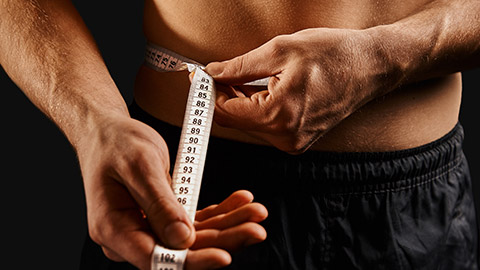
In order to discuss the measures of muscle hypertrophy we have to have an understanding of what can be measured. According to Haun et al (2019) there are multiple indicators of muscle hypertrophy including:
- Muscle fibre thickness
- Muscle fibre cross-sectional area
- Muscle volume
- Muscle mass
The measurement techniques used to measure these can be broadly put into three categories:
| Macroscopic measures | These include whole-body assessments as well as anthropometric measures that can be used to infer that muscle hypertrophy has occurred. These techniques include air and water displacement measures such as Bod Pod machines, hydrostatic weighing, bioelectrical impedance scanning machines, skinfolds, and girths. In more recent times these measures have also included ultra-sound, X-ray, and MRI technology. |
|---|---|
| Microscopic measures | These methods involve extracting muscle tissue from subjects (via biopsy) and staining fibres for counting and measurement under a microscope. |
| Molecular measures | This requires tissue samples acquired via biopsy where scientists analyse changes in protein sub-fractions at the myofibrillar level (e.g. actin and mysosin). |
As a personal trainer, there are a limited number of options at your disposal to use to measure hypertrophy gains in your clients. Accessing equipment like ultra-sound and MRI may give the most accurate indications of hypertrophy gains but are expensive to access and the results they give would be outside the requirements of your average client.
While the use of bioelectrical impedance scanners is now becoming commonplace in gyms, these give only broad indications of hypertrophy via increases in “lean tissue” percentages. Unfortunately, increases in lean tissue percentage can also occur through a reduction in other tissues (namely fat and fluid). In order to get a clearer indication of where hypertrophy training has led to muscle growth, personal trainers tend to rely on girth measurements.
The reliability of girth measures as a means of evaluating muscle hypertrophy comes down to two key factors:
- The experience of the trainer in taking girth measurements: This relates to the tension they place on the measurement tape and the contraction state of the muscle being measured.
- The consistent use of anatomical landmarks to ensure the measurement location of each muscle is consistent.
There have been several studies performed to evaluate the reliability of girth measurements on healthy patients. The data suggests that these measurements are reliable and can be reproduced with a high degree of accuracy, particularly when the same practitioner takes the measurements (Measurement in Rehabilitation, n.d.). Measurements taken by different practitioners are not as reliable when a standard tape measure is used.
Most of the variability in obtaining girth measures arises from the inconsistent use of anatomical landmarks to arrive at a consistent measurement point on the muscle.
Measurement in Rehabilitation (n.d.) suggests the following recommendations for improving the reliability of girth measures:
- The same trainer who conducted the initial measures should take any re-measures
- The trainer should attempt to place the same amount of tension on the tape during each measure – this comes with practice. Key indicators are how much the client’s skin indents under the tape during the measure. A good amount of tension will see all parts of the tape in contact with the skin, while not indenting the skin.
- Girth measures can be taken on limbs in flexed or unflexed states. All measures should be taken at the peak of the muscle belly (widest point).
- Ensure the tape is level around the site being measured (i.e. as close to vertical or horizontal as possible around the measured area).
- Measure girths prior to any exercise having been completed (as increased blood flow to the muscle during exercise can influence results).
- The trainer should always use consistent anatomical landmarks along with vertical/horizontal measures from these landmarks to establish a reproducible measurement point on the muscle belly. This will ensure you measure from the exact same spot each time. Examples of this process are to come.
Assessing hypertrophy gains with girth measurements
In order to become proficient (and confident) in assessing changes in body dimensions due to hypertrophy training, you need considerable practice. Inaccuracies in these measurements can lead to unwarranted disappointment in your clients and a loss of motivation to continue with the programme.
The positives related to this form of assessment are that it is accurate (when administered well), is low cost and can be carried out quickly (with immediate results). The downside of this measurement technique is that it lacks the high-tech appeal of other measures (like bio-impedance scanners) and some individuals may feel uncomfortable with the process (which can involve de-robing to a degree). A clear explanation of the benefits associated with gathering this information and getting to know your client a little before performing these measures can go a long way toward improving a client’s willingness to participate.
Equipment required
All you need to complete accurate girth measurements are:
Common Sites for Assessing Hypertrophy Training Improvement
The following information covers the most common sites for measuring hypertrophy improvement by girth along with the process to use to improve the reliability of measures. This information (including images) is adapted from Norton (2018).
Chest Girth (encompasses chest and upper back): This is a measure mainly taken on males. It is rarely a measurement sought by females). Locate the mesosternale landmark (pictured below) where the 4th rib meets the sternum. Start by palpating the medial portion of the clavicle, the space below this is the gap between the 1st and 2nd rib. Palpate over the 2nd rib to find the space between the 2nd and 3rd rib, then repeat this process to find the 4th rib. Mark the spot where the 4th rib meets the sternum (as pictured). Instruct the client to stand relaxed while slightly abducting the arms to allow the tape to be placed around the chest. The subject should breathe normally, and the measurement should be taken at the end of the expiration phase with the arms relaxed at the sides. Gently pull the ends of the tape while ensuring the tape is in contact with the skin (without indenting) and that it remains horizontal around the torso. Record the measurement. With female clients who want this measurement, it would be best practice to allow the client to locate their own 4th rib. Additionally, the tape could be crossed behind the client, to avoid any awkwardness or accidental contact with the chest.
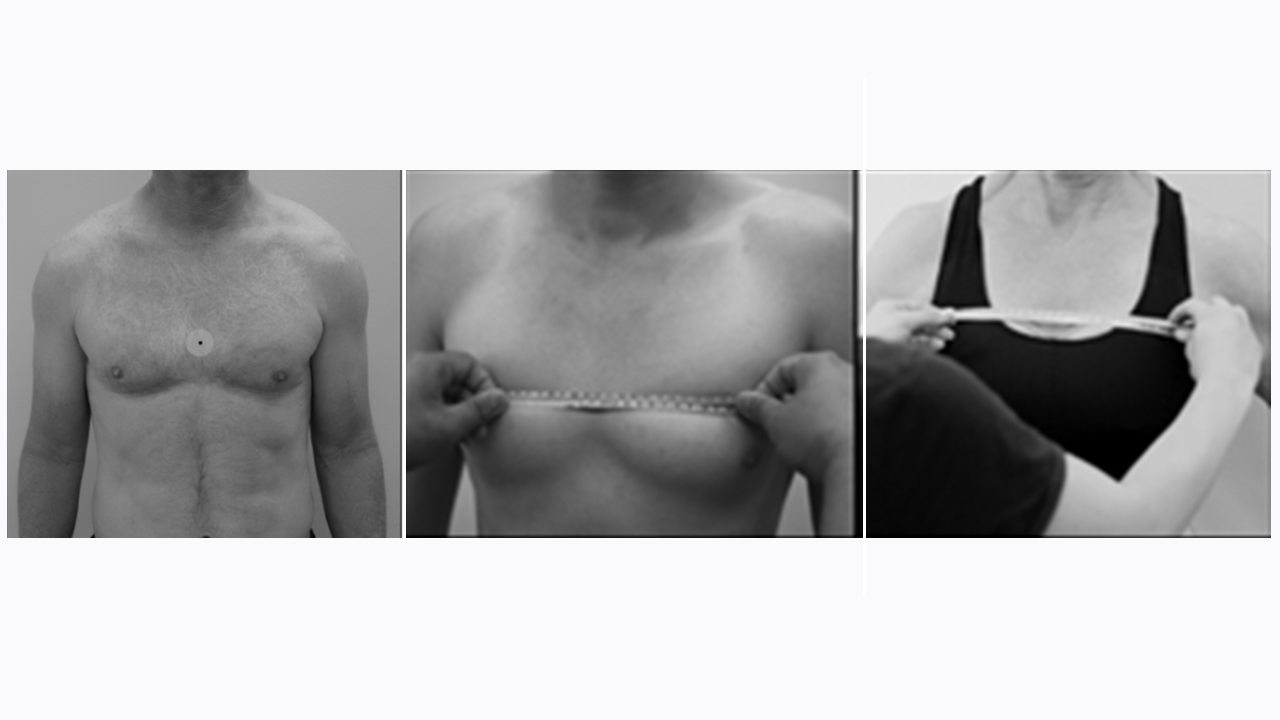
Take a look at the following video where Ben demonstrates the girth measurement of various sites.
Mid-arm girth
This measurement encompasses biceps and triceps). Ask the client to clench the fist of the measured arm and bend the elbow to 90 degrees of flexion while flexing the biceps as much as possible. Make a mark on the highest point of the biceps. Ask the client to stand naturally (arms at sides). Locate the acromial process of the scapula and measure the straight-line distance between the acromial process and the mark you made on the biceps (note this measure). For a relaxed upper arm measure, simply place the tape over the mark you have made and pull the ends gently ensuring the tape is in contact with the skin around the arm (without indenting) and horizontal in relation to the floor. Record the measurement. For a flexed measure, have the client perform the same elbow flexion movement as before (90 degrees) and measure over the mark you have made ensuring the tape is running vertically. Record the measurement.

Forearm girth
The client should be standing with arms at their side. Instruct them to hold the arm you will measure slightly away from their body (palm facing forward). A visual assessment of the forearm should be able to determine where the forearm is widest (usually towards the proximal end of the forearm). Place a mark with your pen in the centre of the forearm where you believe it is widest. Measure the direct vertical distance from the middle of the elbow joint (fold) to the mark you have made (note this measure for re-testing purposes). Place the tape over the mark you have made on the forearm pulling the tape ends gently to ensure the tape is in contact with the skin around the forearm (without indenting) and horizontal in relation to the angle the arm is from the body. Record the measurement.

Gluteal girth
This measurement encompasses gluteal and anterior pelvis muscles like TFL. This measure is taken at the level of the most prominent part of the buttocks. The trainer stands at the side of the client to ensure the tape is held horizontally (not tilted) and to avoid any awkwardness associated with this area of the body. The client stands with feet together and arms folded across the upper body. They should stand without actively contracting their gluteal muscles. Pull the ends of the tape gently across each other and ensure the tape is in contact with clothing (minimal) around the hips and remains horizontal to the floor.
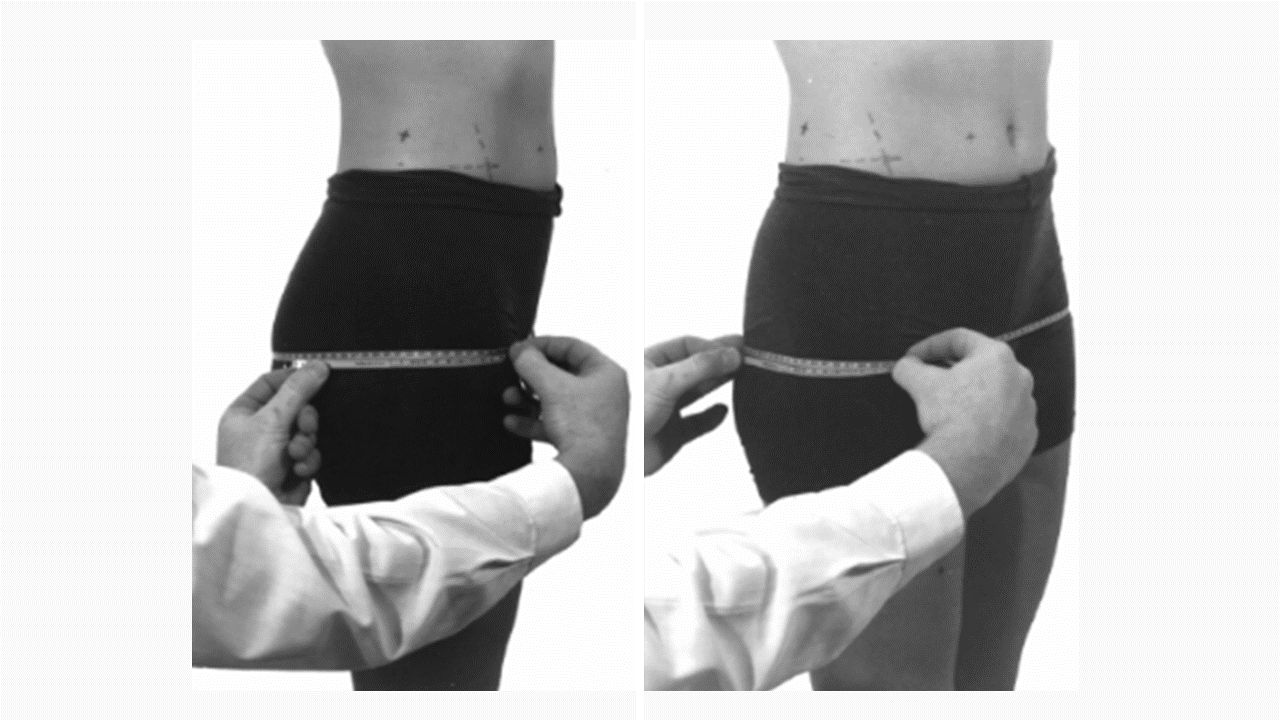
Upper Thigh Girth
This measure is taken 1cm below the level of the gluteal fold (lower rounding of the buttocks). The client should stand with the feet slightly apart and weight distributed evenly between the feet. Arms should be folded across the chest. The trainer positions themselves to the side of the client and should pass the tape around the lower part of the leg, sliding it up into position (maybe even asking the client to assist at the top end as you are nearing an area that might cause a client concern). Ask the client to stand in a relaxed fashion. Pull the ends of the tape together gently and ensure the tape is in contact with the skin (or minimal clothing) and remains horizontal around the thigh. Record the measure.
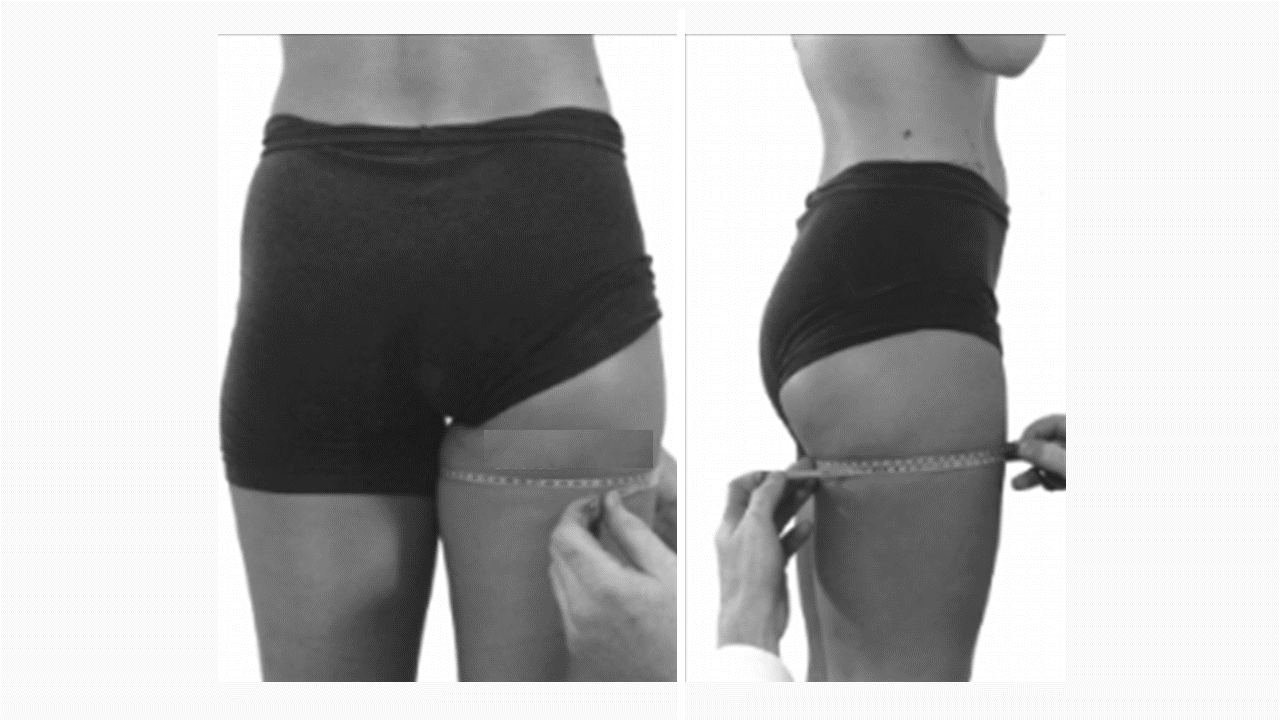
Mid-thigh Girth
This measurement encompasses the quadriceps and hamstrings. Have the client locate their ASIS on the pelvis and hold the start of the tape on that point. Run the tape vertically down the centre of the thigh to the top of the kneecap. Place a mark in the centre of the thigh that is the halfway point between the top of the kneecap and the ASIS. Record the measure from the ASIS to this mark. Next, position yourself to the side of the client and loop the tape around the lower leg, raising it up to cover the mark you have made. Pull gently on the ends of the tape while ensuring the tape remains in contact with the skin and horizontally to the floor around the thigh. Record the measurement.
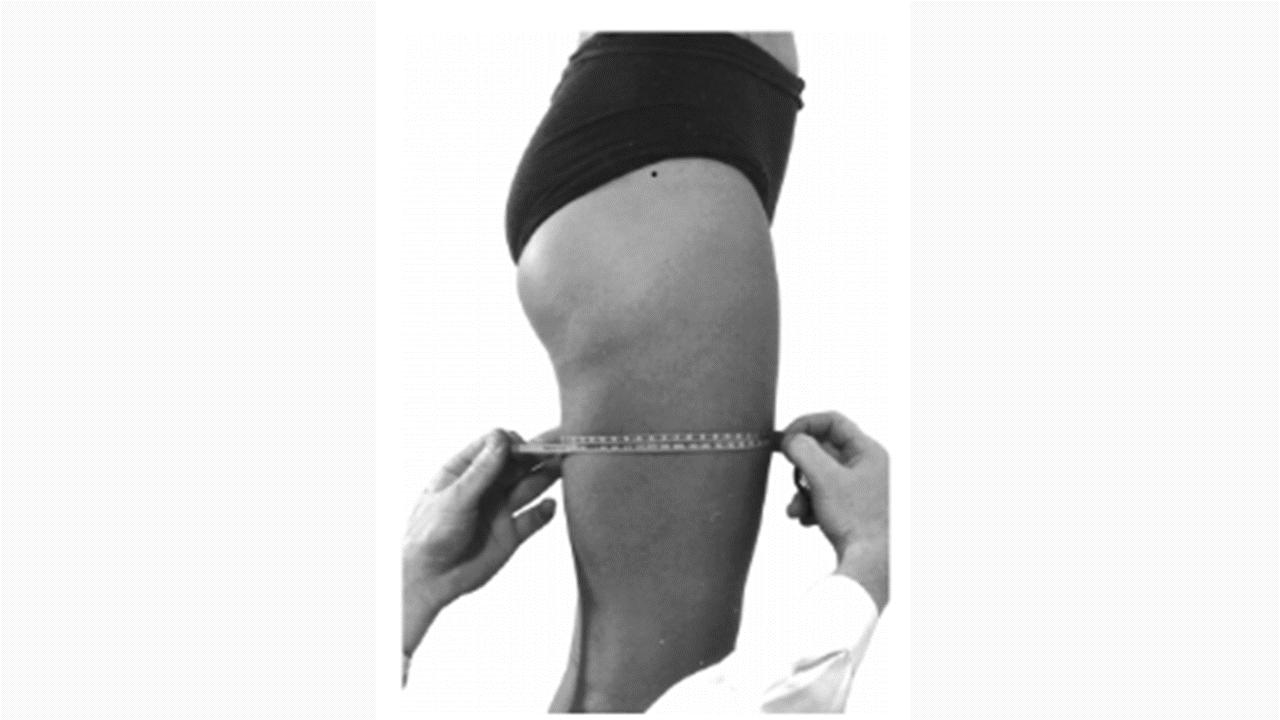
Calf girth
This measurement encompasses calves and anterior shin muscles like the anterior tibialis.
View the calf from the back while the client is standing and identify the widest point. Place a mark a the centre of the calf at this height. Next, measure the distance from the posterior knee joint fold (note, that there may be two lines visible here, so take the measurement from the lowest one) to the mark you have made. Record this measurement. Next, loop the tape around the lower leg, raising it up to cover the mark you have made. Pull gently on the ends of the tape while ensuring the tape remains in contact with the skin and horizontally to the floor around the calf. Record the measurement.
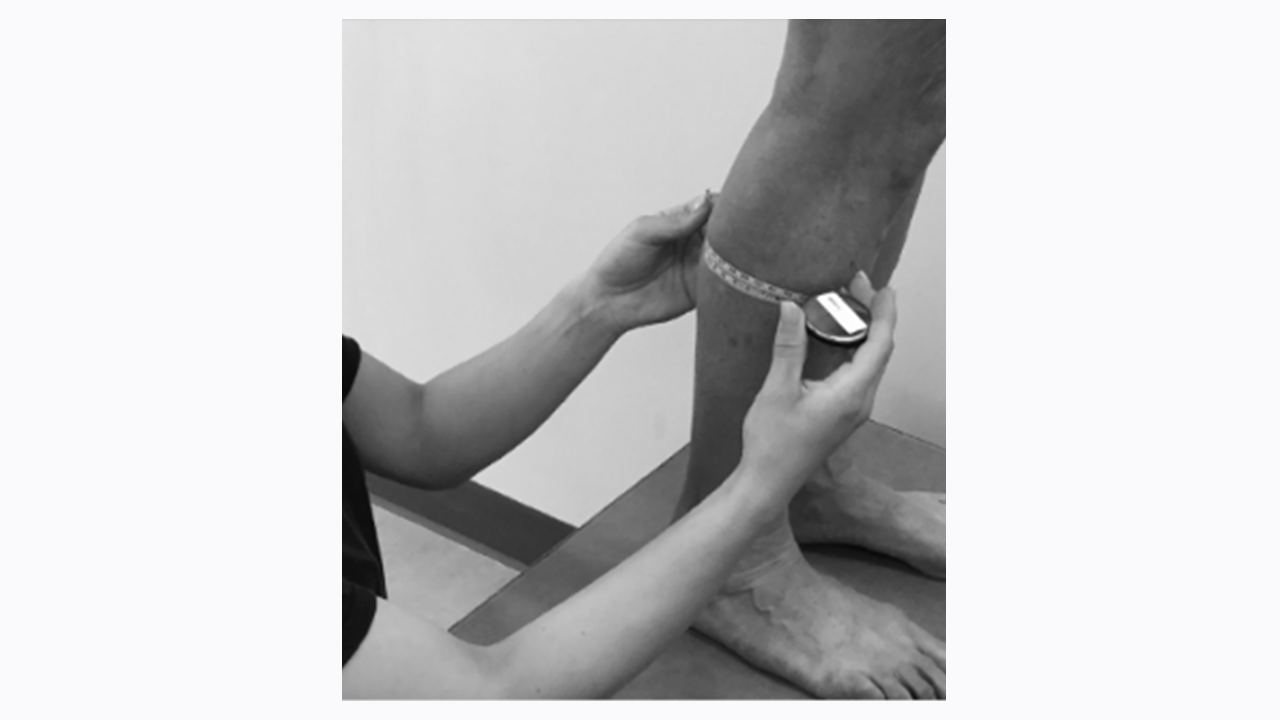

Testosterone and its AAS derivatives have been shown to increase muscle protein synthesis (MPS), and satellite cell activation and possibly inhibit catabolic (breakdown of protein) in skeletal muscle tissue. Specifically, AASs are thought to enhance the transcription part of protein synthesis by increasing signalling in muscle cells, increasing fuel storage in muscles and by increasing both the action and the number of satellite cells. AASs also appear to inhibit the genes and enzymes involved in muscle atrophy. This dual action effect of these hormones leads to a greater net protein yield and thus increased hypertrophy (McCullough et al, 2021).
While testosterone administration and resistance exercise can both increase muscle mass independently, the combination of both results in dramatically enhanced skeletal muscle hypertrophy. It is suggested that appropriate resistance training approaches create added stimulus for the steroids to have their additive effect. The effect that these steroids have on reducing muscle protein breakdown appears to also have an enhancing effect on muscle recovery post-exercise. This means a person could then target the same muscle again sooner, leading to a greater cumulative hypertrophy effect.
So, how much benefit could a person get from AASs? A recent systematic review and meta-analysis on the effects of AAS on healthy exercising adults of all ages showed that AAS in conjunction with resistance training protocols improved strength by 52% more in AAS users than non-users and resulted in significantly greater gains in lean body mass (Andrews et al, 2018).
There is no question that the use of AAS drugs has a marked effect on muscle strength and size when combined with resistance training, but at what cost?
Steroid use and hypertrophy
While it is imperative to the integrity of the industry that personal trainers are not associated with the promotion of or distribution of illicit substances like anabolic steroids, these substances are commonly used by those interested in gaining an edge in performance or body aesthetics, so it is important for all trainers to have an awareness of what the science has to say about their use. Being well-informed may allow you to discourage a future client from using these substances. This short section will cover the effects of anabolic steroid use on muscle and performance along with the reported negative effects of their use. But first, a little history lesson for context.
The first studies recognising the effect of naturally occurring anabolic steroids were completed in the 1930s. A short time later, competitive athletes began using exogenous anabolic steroids to increase muscle mass and performance. While the potential benefits of steroid hormones were denied until the 1970s by the British Association of Sports Medicine and the American College of Sports Medicine, the use of exogenous steroids like testosterone and its derivatives was banned by the International Olympics Committee in 1974 (McCullough et al, 2021).
A range of Anabolic Androgenic Steroids (AAS) began to surface in recreational gyms in the 1980s. These were mainly used by young resistance trainers who wanted to improve their body image. Due to the increase in circulation and use of these drugs and the associated negative health effects of taking them, many countries actually changed their legislation in the 1990s to incorporate these steroids to regulate their use and distribution. The World Anti-Doping Agency (WADA) was created in 1999 to protect athletes from the detrimental effects of steroids and maintain the integrity of sports globally (McCullough et al, 2021).
It is currently estimated that 6.4% of males and 1.6% of females use anabolic androgenic steroids (AAS) globally, with recreational sportspeople (mainly gymgoers) being the highest users (Sagoe et al, 2014). It is clear from these statistics that steroid use is a global issue. Sagoe et al (2014) report that the Middle East, South America, Europe, North America, Oceania, and Africa all have AAS use in the region of 2-5% of the population.
Negative effects of steroid use
Studies on the negative effects of steroid use are limited due to issues with funding these types of studies. Instead, most of the data relating to the negative effects of steroid use comes from human case study reports. It is thought that serious and life-threatening adverse effects may be underreported, especially as they often occur many years after steroid use. Here is the latest information relating to the side effects of anabolic steroid use from the National Institute on Drug Abuse (NIH). Note, that this is not a comprehensive list of issues, but rather a collection of the most common effects.
Cardiovascular effects
Steroid use has been associated with increased incidence of high blood pressure, decreased function of the heart’s ventricles and cardiovascular diseases such as heart attacks, artery damage and strokes, even in athletes younger than 30. Steroids contribute to the development of cardiovascular disease partly by increasing the level of low-density lipoprotein (LDL) and decreasing the level of high-density lipoprotein (HDL). This increase in bad cholesterol increases the risk of atherosclerosis (a condition in which fatty substances are deposited inside arteries and disrupt blood flow). If blood is prevented from reaching the heart or brain, the result can be a heart attack or stroke, respectively. Steroids also increase the risk that blood clots will form in blood vessels, potentially disrupting blood flow and damaging the heart muscle, so that it does not pump blood effectively.
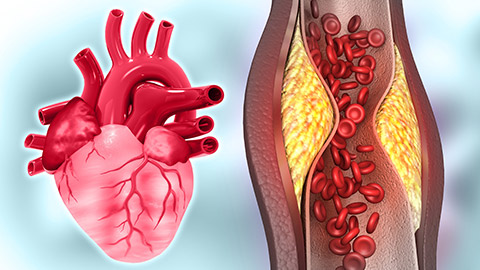
Hormonal system effects
Steroid use disrupts the normal production of hormones in the body. Changes that can be reversed include decreased sperm production and decreased function of the testes (hypogonadism) which leads to low testosterone levels and shrinking of the testicles (testicular atrophy). Irreversible changes include male-pattern baldness and breast development (gynecomastia) in men. Anabolic steroids may also act upon the hormone system to increase the risk of testicular cancer, especially when steroids are used in combination with insulin-like growth factors.
In females, anabolic steroids cause masculinisation. Specifically, breast size and body fat decrease. The skin becomes coarse, and the voice deepens. Women may experience excessive growth of body hair but lose scalp hair. With continued administration of steroids, some of these effects become irreversible.
Infections
Many people who inject anabolic steroids may use nonsterile injection techniques or share contaminated needles with other users. This puts these steroid users at risk for acquiring life-threatening viral infections, such as HIV and hepatitis B. In addition, it is thought that anabolic steroids suppress the immune system, which could worsen infections.
Liver effects
Steroid misuse has been associated with liver damage, tumours and a rare condition called peliosis hepatis, in which blood-filled cysts form in the liver. These cysts can rupture, causing internal bleeding and even death in rare cases.
Skin
Steroid use can cause acne, hair loss (head), cysts and excessively oily hair and skin. Injections of steroids may also cause pain and abscess formation at injection sites. Anabolic steroids can also produce jaundice, or yellowing of the skin or eyes, as a result of damage to the liver.
Behavioural effects
Anabolic steroids lead to increased irritability and aggression, although these findings are hard to pin exclusively on steroids at this point as these personality traits may simply be overrepresented in steroid users (i.e. anti-social or histrionic personality disorders) or could be due to the use of other drugs that are commonly taken alongside steroids. However, people who use anabolic steroids report more anger than non-users, have more fights, and exhibit more verbal aggression and violence towards significant others.
Psychiatric Disorders
Anabolic steroid users are more likely than nonusers to report anxiety. Moderate to high doses of anabolic steroids are also associated with major mood disorders such as mania, hypomania and major depression. However, these effects are not consistent in the literature.
The following programming suggestions come from the National Academy of Sports Medicine (NASM).
Most research indicates that performing 15-20 sets of challenging hypertrophy exercises a week per muscle group appears the optimal stimulus for muscle growth. Generally, a single muscle group will achieve its maximal response within 5-6 targeted and challenging sets of one exercise, so it makes sense to split the total volume per muscle group into multiple workouts across the week. Keeping in mind the time an average client can devote to the gym, it is suggested working a muscle group twice a week is a realistic aim. This would mean around 10 sets on one muscle group (5 heavier and 5 slightly lighter) would be a good balance to aim for.
- Exercises
The typical approach is to start a workout with compound exercises and then move to isolation exercises. - Set
The volume of sets performed should be modified over time as training progresses. When starting out, three sets per exercise would be sufficient. Intermediate lifters will lift in the 4-6 set per exercise range (at least for initial exercises) and advanced lifters might do as many as 7 sets for an exercise. - Reps
Similar to sets, reps are an opportunity to manipulate training volume. Strength hypertrophy sets for targeting contractile element hypertrophy are in the 6-10 range, whereas sets targeting sarcoplasmic hypertrophy are in the 10+ rep range. - Loading
Strength hypertrophy sets are best performed with a 75-85% load (for 6-10 reps). As the reps go up the weight must diminish. Loading will also reduce during high-volume approaches such as drop sets and variable rep approaches such as the 5-10-20 method. The key to effective loading is to choose a weight that will result in volitional fatigue. - Rest
For most hypertrophy training, rest is kept relatively short for increased metabolic stress. This can be as short as 30 seconds for lighter loads and up to 2 minutes for heavy lifts or continuous multi-set approaches. Shorter rest can also be used in approaches like cluster sets.
Manipulating all of these variables regularly (even in one workout) is the way to add variation to workouts which helps drive adaptation.
Right, time to apply what you have learned. Head to your assessment for an assessment guide video and instructions on submitting your assessments.
The assessment guide video explains your assessment task, which requires you to use the information you have learned on this topic to help a case study client.
This assessment will require you to apply the knowledge you have learned and practised by completing the following tasks:
- Design a Hypertrophy Training programme for an Athlete
- Justify your selection of programme variables (e.g. modality of training, exercise selection, sets, reps, rest etc.)
- Design a progressed programme for the end of the mesocycle
- Justify the changes you implement to the progressed programme
- Select a relevant fitness test to test this fitness component.
Important note
Within this module, there is a single assessment, Assessment 1B, which spans various topics covered each week. To successfully complete this assessment by the due date, you will need to integrate knowledge from multiple topics. These topics include:
- muscular endurance
- hypertrophy training
- strength training
- power training.
As you progress through the module, you'll notice that each week's topic contributes a piece of the puzzle required for the assessment. While you advance through each topic, you will have gathered all the necessary knowledge and skills to complete Assessment 1B comprehensively.
Note: Do not leave all the training programs to the last minute, these should be worked on every week in order to complete the assessment and submit by the due date.
